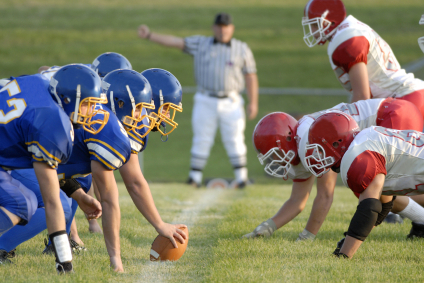Growing up in the 1990’s a concussion was viewed as a “minor injury” in professional American Football. As a child supporting my local football affiliate, I saw the quarterback get knocked out of the game on several occasions. He would lose consciousness only to be inserted back into the game the same day or following week. He was “cleared” after completing tests performed by medical professionals. This event was not an isolated incident and happened on several occasions throughout the history of football.
After a seven year career that same quarterback was forced to retire as a result of severe concussions. Continual blows to the head caused this quarterback to shorten his career. He is not an outlier when discussing football players, traumatic brain injuries and concussion impacted careers.
Fast forward from the 1990’s to the 2020’s and the knowledge and safety measures have changed drastically in the game of football. New penalties, education and safety precautions regarding concussions and traumatic brain injuries have been preached to the next generation of football players, but the reality of tackle football is that head injuries will occur.
Concussions and Mental Health
Concussions carry short-term and long-term symptoms. Roughly eighty percent of all first time concussion recipients have no recurring symptoms after the initial headaches subside. However, nearly twenty percent of individuals diagnosed with a headache have reported symptoms as a result of their concussions.
A recent study published by the National Center for Biotechnology Information (NCBI) on depression and sports-related concussions concluded the following:
“Depressive symptoms after a concussion seem to be associated with post-concussion symptoms. Repeat concussions can contribute to later-onset major depressive disorders.”
Concussions can negatively impact the mental health of the victim in both the short term and the long term. According to a study conducted by TRACK-BI, 20% of individuals that suffered a minor traumatic brain injury (mTBI) experienced mental health symptoms in the six months after the injury occurred. These individuals were more likely to report PTSD symptoms or major depressive disorders. The mental health and head injury study also found that mTBI patients were more likely than their orthopedic injury counterparts to report mental health issues.
These two studies help identify a direct correlation between concussions and short-term along with long-term mental health
What are Short Term Concussion Symptoms?
There are a handful of short term concussion symptoms that regularly appear in individuals that have suffered mTBI. They are:
- Headache or pressure in the skull
- Loss of consciousness
- Confusion and feelings of fogginess
- Forgetfulness that surrounds the event
- Dizziness
- Ear ringing
- Nausea symptoms
- Vomiting
- Slurred speech
- Delayed response when asked questions
- Dazed
- Fatigue and loss of energy
Long Term Concussions Symptoms
With every concussion comes added risk of long-term depression symptoms. Repeated traumatic brain injuries, whether minor or major, provide problematic symptoms across all individuals. Some of the long term concussion symptoms are:
- Trouble concentrating
- Memory problems
- Irritability and other personality changes
- Sensitivity to light and noise
- Sleep disturbances
- Depression and other psychological problems
- Disorders of smell and taste
Several of these symptoms listed above are reflective of the behavioral changes associated with Chronic Traumatic Encephalopathy (CTE) including mood changes, headaches and memory problems. Several active and retired professional football players have expressed concerns regarding the repeated blows to their heads. Other former football players have exerted increasingly disturbing behavior.
Although instances of bizarre criminal behavior have been displayed by several current and former professional football players, the data available in 2020 is too limited to accurately identify whether or not these behaviors are associated with CTE.
General Population vs. Football Athletes
According to a concussion study published by NPR, one in four individuals in the general population experience at least one concussion in their lifetimes. Our skulls are designed to absorb some impact and our bodies have adapted to become better suited to recovering from injuries. However, when two athletes at the top of their game collide at the crown of their heads at full speed, the results and head injuries can be similar to a car crash
Concussions are a relatively frequent injury that 20% of the general population experiences in their lifetime. However, when you compare the general population to the football community this number increases. It is difficult to say with certainty regarding the football population concussion rate as many minor concussions go unreported.
Brain Donations by Professional Football Players
According to a recent study, 110 of the 111 brains that were donated via deceased United States professional football players were diagnosed with CTE. That’s a 99% rate of CTE for the sample size.
In the study, doctors and neuroscientists had theories regarding the study. Dr. Ann McKee stated the following:
“Families don’t donate brains of their loved ones unless they’re concerned about the person. So all the players in this study, on some level, were symptomatic. That leaves you with a very skewed population.”
Dr. McKee is accurate when she mentions that the brains they studied were symptomatic of behavioral issues. This studied population is somewhat limited and may only be reflective of a small portion of professional football players. More data and research is required across a wider breadth of professional football players to accurately identify the correlation between time spent playing football and CTE.
In most instances, rates of CTE increased with the duration of time spent playing football. The longer the individual’s career and the higher the level of football can increase the potential severity of CTE in an individual.
CTE is only able to be diagnosed after the individual is deceased. Although some show symptoms associated with CTE, this disease cannot be accurately diagnosed until after death.
Conclusion
Given the data available, one can believe that there is a correlation between repeated concussions, CTE and changes in behavior. More research is required to identify questions but the longevity and the level at which an individual participates in football can drastically increase their probability of becoming a victim of CTE.
From behavioral shifts, criminal behavior and shortened careers, some former football players exposed to concussions from childhood to adulthood, have shown health shifts and symptoms consistent with CTE and traumatic brain injuries. More data is and research is required to accurately identify the exact correlation between these symptoms, but the existing data available is indeed startling.





No Comment